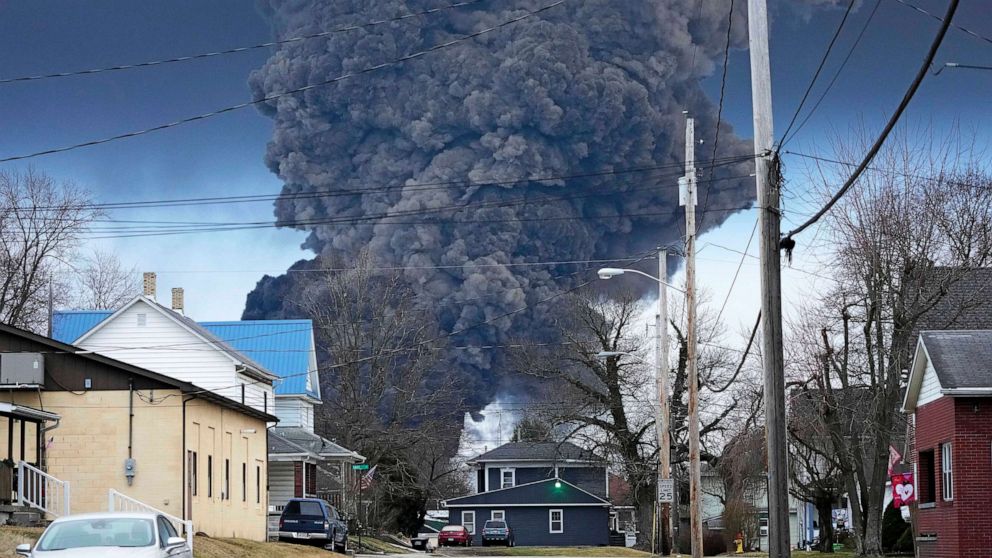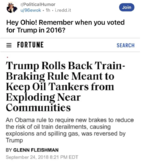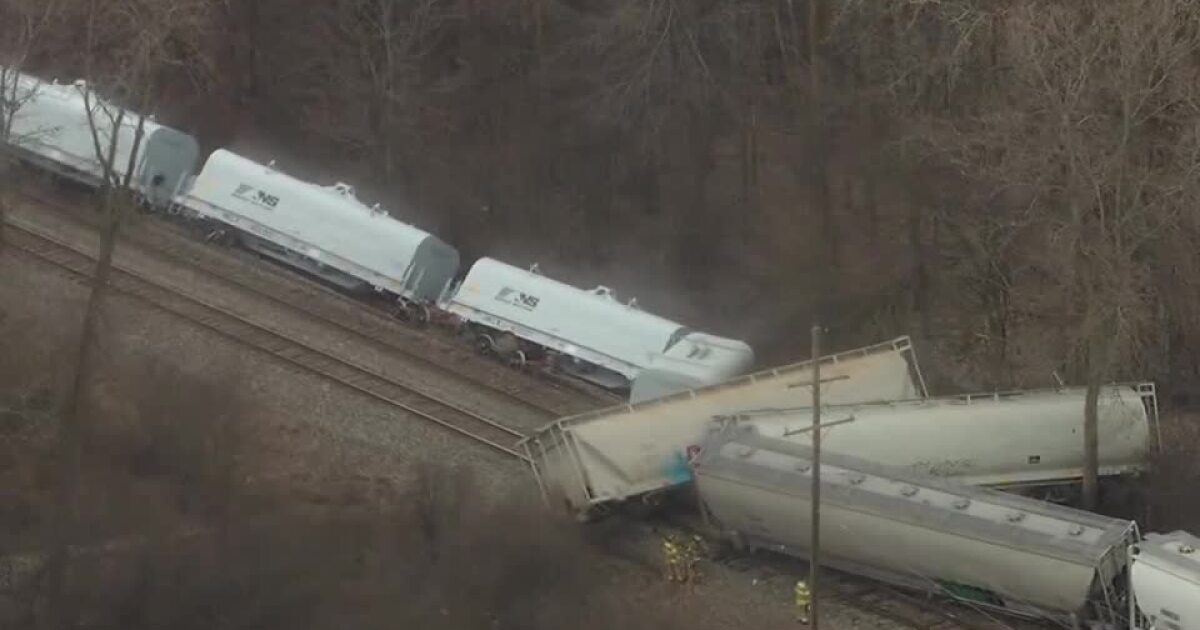
Ohio catastrophe is ‘wake-up call’ to dangers of deadly train derailments
The next derailment ‘could be cataclysmic’ if action isn’t taken after the incident near the Ohio-Pennsylvania border, says expert

What phosgene is
- Phosgene is a major industrial chemical used to make plastics and pesticides.
- At room temperature (70°F), phosgene is a poisonous gas.
- With cooling and pressure, phosgene gas can be converted into a liquid so that it can be shipped and stored. When liquid phosgene is released, it quickly turns into a gas that stays close to the ground and spreads rapidly.
- Phosgene gas may appear colorless or as a white to pale yellow cloud. At low concentrations, it has a pleasant odor of newly mown hay or green corn, but its odor may not be noticed by all people exposed. At high concentrations, the odor may be strong and unpleasant.
- Phosgene itself is nonflammable (not easily ignited and burned).
- Phosgene is also known by its military designation, “CG.”
Where phosgene is found and how it is used
- Phosgene was used extensively during World War I as a choking (pulmonary) agent. Among the chemicals used in the war, phosgene was responsible for the large majority of deaths.
- Phosgene is not found naturally in the environment.
- Phosgene is used in industry to produce many other chemicals such as pesticides.
- Phosgene can be formed when chlorinated hydrocarbon compounds are exposed to high temperatures. Chlorinated hydrocarbon compounds are substances sometimes used or created in industry that contain the elements chlorine, hydrogen, and carbon.
- The vapors of chlorinated solvents exposed to high temperatures have been known to produce phosgene. Chlorinated solvents are chlorine-containing chemicals that are typically used in industrial processes to dissolve or clean other materials, such as in paint stripping, metal cleaning, and dry cleaning.
- Phosgene gas is heavier than air, so it would be more likely found in low-lying areas.
How people are exposed to phosgene
- People’s risk for exposure depends on how close they are to the place where the phosgene was released.
- If phosgene gas is released into the air, people may be exposed through skin contact or eye contact. They may also be exposed by breathing air that contains phosgene.
- If phosgene liquid is released into water, people may be exposed by touching or drinking water that contains phosgene.
- If phosgene liquid comes into contact with food, people may be exposed by eating the contaminated food.
Last edited:




